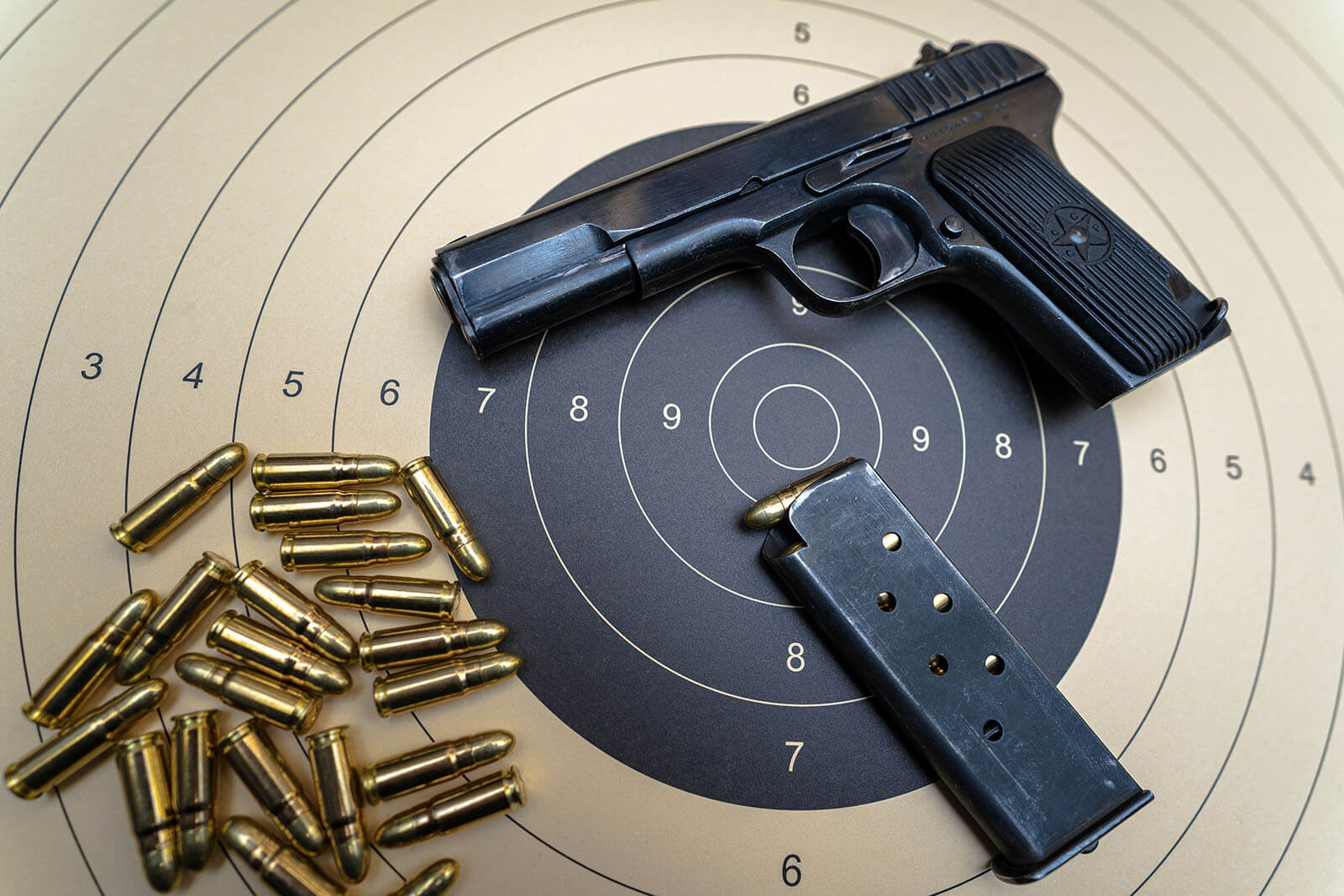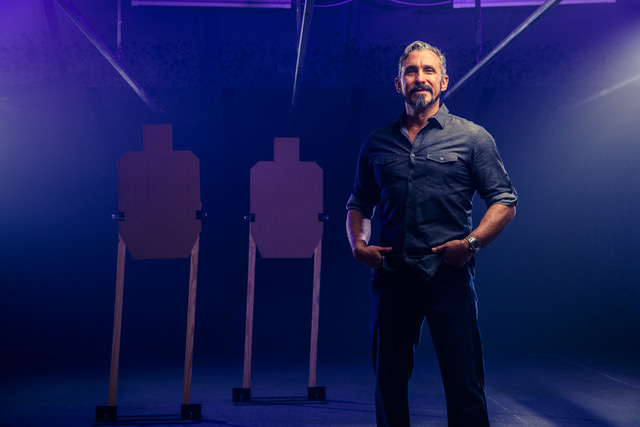As you shoot pistols more often you begin to appreciate their subtleties. You learn more about the equipment as your shooting skills advance. There is no way around developing shooting skills other than to shoot. No short cuts, cheat codes or life hacks—it’s time on the range honing your skill. The more training, the more costs associated. It costs money in the form of ammunition, among other things. Times are tough and we all have our life priorities, but training should find its way into your priorities. You will be thankful you did, if you’re involved in a defensive gun-use incident. But when it comes to purchasing training ammunition what type should you buy? When looking for training ammunition, you want a defensive, clone-like option.
Here are four reasons to select ammunition that closely mimics each other:
Importance of Ammo Weigh-In
Ammunition comes in many different types. The two most popular types are training and defensive. As the name implies, training ammunition is used for training, practicing and plinking. It is ideal for these tasks because it’s affordable and available. Training ammunition is easier to produce in bulk quantities because it is a simple round. The projectile is usually fully encapsulated, often referred to as full metal jacket or FMJ surrounding a lead core. As a result, manufacturers can mass produce them, hence the cheaper price. Bullet weight can also affect the pricing so the 115gr is typically the cheapest. Pistol ammunition, like all other ammunition types, can further be divided by bullet weight. This is the projectile’s weight in grains. Currently, 9mm is the most popular caliber. It comes in three different weights: 115gr, 124gr and 147gr. You may occasionally find other bullet weights, but these are the most popular. What bullet weight should you choose for training?
Keeping Things Simple at the Same Weight
When training, the problem with bullet weight is not the price, but whether the weight matches that of your defensive ammunition. While there is a performance difference between a 115gr FMJ and 115gr JHP round, the layman will probably not notice. The reason for the same bullet weight is to streamline as many variables as possible. You can run into problems with training ammunition being “easier” to shoot in training conditions. Easier, is of course, subjective, and relative to the defensive ammunition in the same setting; similar to a side-by-side comparison. There is less recoil, faster splits and maybe even have a different point of impact compared with the defensive ammunition. These variables can either help or hurt your performance in a true defensive gun use.
It is important for training ammunition to clone defensive ammunition. You get a glimpse of how the bullet will perform in a controlled setting. The more familiar you are with the anticipated performance, the superior your performance. You better handle the recoil which helps you to shoot faster and shoot to your true point of impact with minimal distraction from a heightened flash signature. This is a close comparison in a controlled environment without the higher cost associated with defensive ammunition—which is generally manufactured with these performance attributes and others in mind. These attributes are often used to identify the ideal defensive round. How does this comparison really help prepare you for a defensive gun use?
Shooting Faster Through Improved Recoil Control
When bullet weight is the same it closely mimics felt recoil. Some bullet’s recoil can be forceful, while others can be softer. This can be subjective at first, but with more time behind the gun you feel the difference. The powder charge needed to propel the bullet to reach minimum penetration depth is pretty much the same regardless of the bullet type. It is more about reaching a certain velocity to obtain required penetration depth. This directly relates to the felt recoil. The benefit of having the same bullet weight will be in your shot-to-shot recover or the time splits. This is the elapsed time between the last shot fired and the next shot fire. For optimal performance, we want the fastest split times we can repeat on command. When you train with the same bullet weight you get better at handling the recoil, thereby improving recoil control. If the training round is different, softer than the forceful defensive round, you might see problems; more difficulty with recoil control being only one of them. The powder used not only impacts the recoil, but the flash as well.
Minimizing Flash at Night and Dealing With it During the Day
The types of powder will produce either a significant flash or a more reduced flash. For defensive use, we want the lowest flash signature. Training requirements really don’t have a need for reduced flash signatures so cheaper powder is used, generally producing more pronounced flashes. A good amount of defensive gun uses occur during diminished light or low light conditions. The lower flash signatures help to minimize overall signature. It’s not like suddenly being invisible, it just means there is less, “I’m over here.” Where you enjoy the benefits of low flash signature is when shooting quickly in low light. Your splits can be negatively impacted if the flash is so bright it makes it harder to see your sights. While this effect is only temporary, the time it takes to visually readapt can be more time than you have available. When shooting training ammunition you will get a brighter flash. If your training is done during daylight hours, there is minimal impact. It is when we shoot the training ammunition at night, that we sometimes see blinding flashes. No matter the flash, we want to hit our intended target.
It Has Got to Be On Target
We see the biggest impact of the four reasons in accuracy. The jacketed hollow point rounds tend to be more accurate; this is due to the nature of manufacturing and combined with the higher manufacture tolerances produce some of the most accurate rounds available. While most defensive gun uses have a low requirement for accuracy, it shouldn’t discount our pursuit of accuracy. Where we really see problems is when we choose one bullet weight for training and a different bullet weight for defensive. For instance, your training ammunition is a 115gr FMJ, it’s cheap, available and easy to shoot. But your defensive ammunition is 147gr JHP, it’s reliable, meets minimum penetration and maximum expansion needs. The difference in bullet weight will affect the point of impact on the target. At close range, the difference is often not observable; it may amount to a couple of inches of difference. It is at extended ranges you may see a difference of several inches. This can translate to a complete miss even if you do everything correctly on your end.
When you use the same bullet weight for training and defense, your point of impact should be close at all expected ranges. It is a factor if you cannot obtain the same bullet weight or cost. Your best strategy is to familiarize yourself with both types of ammunition. Shoot several courses of fire, around 50 rounds of defensive ammunition, to learn about the point of impact with your sight system. (If you are shooting a pistol mounted optic, you want to zero the optic with your defensive ammunition.) Fire half at 10 yards and fire the remaining at the 25-yard line. Then, shoot the same courses of fire with the training ammunition. Where did it impact relative to the defensive ammunition? How much difference do you see at all the expected ranges? Again, you will see a minor shift at close range, within 10 yards. It is beyond the 10 yards you will see the biggest shift. The last thing to do is shoot the same course of fire with training ammunition using an adjusted hold. This means you take the difference between the point of aim and the point of impact, for example five inches high. Now, while shooting your training ammunition, you aim five inches low. This should deliver the rounds on target.
If you still have concerns shooting 50 rounds of defensive ammunition for testing or as an alternative, try this drill. From the 10-yard line, fire 10 rounds slow fire for accuracy using defensive ammunition. Use a marker to connect the dots or draw a line between each bullet hole to create a perimeter. Then from the same distance on the same target fire, 10 rounds slow fire for accuracy using training ammunition. Once again, connect the dots, only use a different colored marker to denote the different ammunition. What you are looking for is at least 10 or more rounds overlapping in both perimeters. If you get less than 10, you might want to consider learning how to hold using the technique described earlier.
Making Your Choice
Training and defensive ammunition are the same, yet different. It is important to know the performance differences. Defensive rounds tend to be loaded a little hotter or stronger. The increased felt recoil can cause slower splits. Powder charges differ, but reduced flash signature improves your chances of seeing your sights at night. Defensive ammunition is manufactured to be more accurate. Different bullet weights can have different points of impact.
Learning about these differences in advance allows you to train better. You can adjust your hold to hit the target, which improves your training outcome. The goal is to be familiar with, not surprised by, the differences in your ammunition choices.


